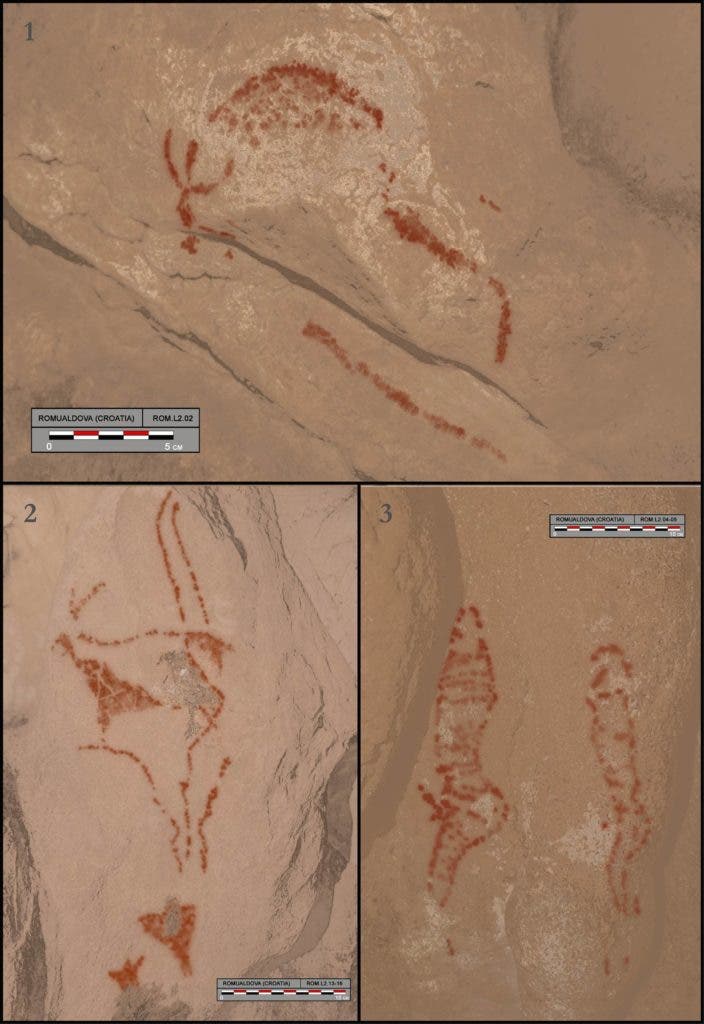The cave art, which was first discovered in 2010, has now been shown to be truly figurative. It could be as old as 34,000 years old.

Composite of digital tracings of 1 Bison_2 ibex and 3 possible anthropomorphic figures from cave art – Credit Aitor Ruiz-Redondo
Ancient artists
An international team of researchers from Britain, France, Canada, Spain, and Croatia analyzed the cave paintings found in Romualdova Pećina (Romuald’s Cave), Croatia. Radiocarbon dating showed that these works are at least 17,000 years old, but judging by other indirect data (such as the dating of the cave sedimentary layers), the paintings might even date from 34,000 years ago. Further research will be conducted in order to establish the precise age of the rock art. But more important is the nature of these paintings. Although not very visible to the naked eye, digital recordings and image amplification techniques have revealed that the paintings represent a bison, an ibex, and two possible anthropomorphic figures.
These are clearly figurative paintings — depictions derived from real object sources and so is, by definition, representational — an important landmark of cultural evolution. The oldest known figurative art painting is over 40,000 (perhaps as old as 52,000) years old and represents an unknown animal. The dating results were only published one year ago. Meanwhile, the earliest known European figurative cave paintings are those of Chauvet Cave in France. These paintings date to earlier than 30,000 BCE (Upper Paleolithic) according to radiocarbon dating. However, these new findings represent the first such art found in the Balkan area.
“Rock art is key for understanding European Palaeolithic societies. Long thought to have been restricted to South-west Europe, recent discoveries on the Balkan Peninsula have expanded significantly the geographic distribution of Upper Palaeolithic figurative rock art, calling into question the idea of its limited distribution,” researchers write in the study.
Dr. Aitor Ruiz-Redondo, a British Academy-funded Newton International Fellow at the University of Southampton and postdoctoral researcher at the University of Bordeaux, further adds that the paintings offers an important clue to understand how different cultures were developed at the same time.
“The importance of this finding is remarkable and sheds a new light on the understanding of Palaeolithic art in the territory of Croatia and the Balkan Peninsula, as well as its relationship with simultaneous phenomena throughout Europe.”
Further research is currently being carried out at the cave.
Journal Reference: Ruiz-Redondo et al. Expanding the horizons of Palaeolithic rock art: the site of Romualdova Pećina. Antiquity, 2019; 93 (368): 297 DOI: 10.15184/aqy.2019.36









